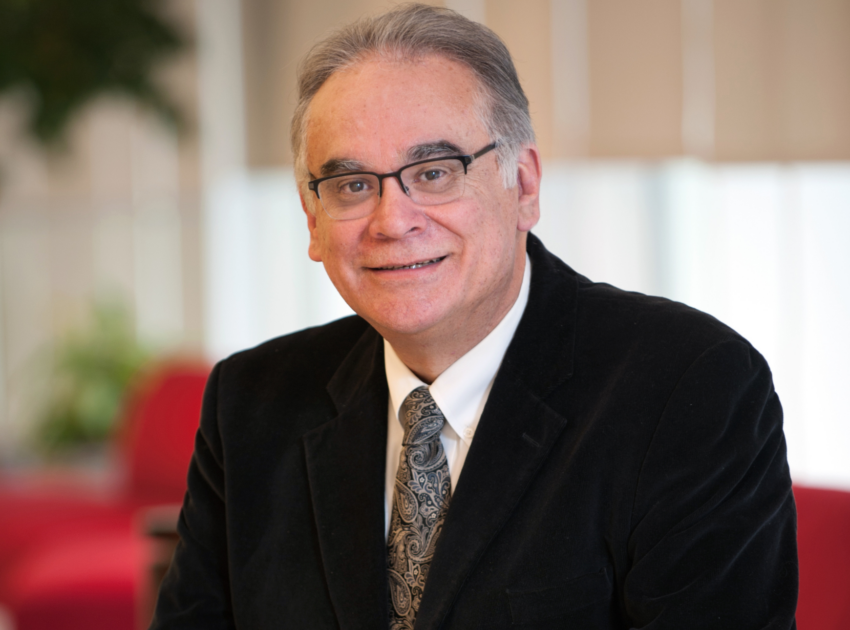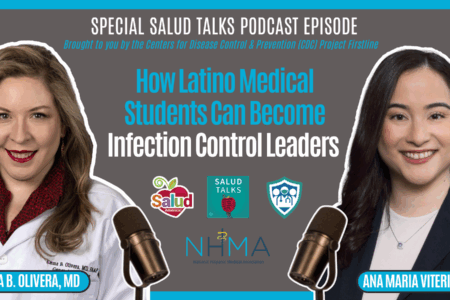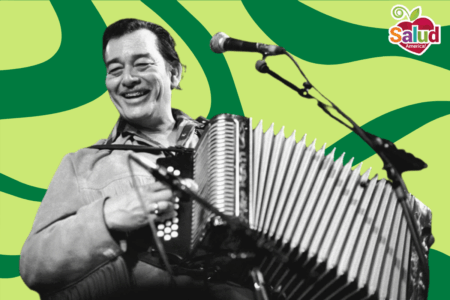
Share On Social!
Growing up, David Acosta was blessed to be part of a loving family with his mother and father, four brothers, and an abuelita in Southern California.
They found joy in helping each other and others.
Acosta realized in childhood he wanted to choose a future career that would bring joy to others – he decided to become a doctor.
“I knew from an early age that I wanted to go into medicine and help out,” Acosta said. “My family [was] probably most instrumental in me going down this path.”
Acosta went on to get his medical degree, practice medicine, and now serves as workforce leader at the Association of American Medical Colleges (AAMC).
But his path wasn’t always easy.
The ‘Familia’ Side of Medicine
Acosta was introduced to medicine and its importance at a young age through his abuelita, who was an “herbalista” (herbalist).
She grew herbs and plants in her garden at their home.

“When my parents would go off to work, probably about an hour later, we’d have all these certain people come to our door, asking for my abuelita,” Acosta said. “She was highly respected community.”
Acosta formed a close bond with his grandmother.
In the same way, Acosta also bonded with his family doctor. She lived only lived two blocks away and frequently visited to talk remedies and how to help the community with abuelita. He admired the way she treated and cared for him and his family members.
“She was actually taking me under to really kind of teach me some of her things that she knew,” Acosta said.
Seeing how both modern and traditional medicine were helping friends and neighbors, Acosta strengthened his desire to become a doctor.
He found support for his goal from his parents, big proponents of education.
“My dad loved school, but he was taken out of 6th grade to work in the fields. My mom was taken out in 8th grade, as well,” Acosta said. “I think that motivated them to stimulate how important education is. They didn’t want us to go through the same things they did.”
But, despite strong family support, Acosta experienced hardships.
Facing Hardships and Challenges
In high school, Acosta met with an advisor to discuss his plan to go into medicine.
The advisor, expressing doubt in his abilities to make it as a doctor, instead suggested Acosta go to trade school for mechanic or carpentry work.
“I remember walking out very angry. But, you know, I didn’t say anything because I respected him, right? You’re not supposed to say anything,” Acosta said.
After the incident, Acosta’s mother noticed he was acting differently. She confronted him and he told her what the advisor said.
While she was angry, too, she gave him important advice.
“You need to translate that energy of anger into really proving them wrong, show them that you can do this,” Acosta recalled his mother telling him.
Thankfully, Acosta could lean on his older brother, Lou, who pursued a medical degree, too.
“[Lou] had tenacity and grit, you know, in the sense of knowing what he wanted,” Acosta said.
Still, Acosta didn’t have someone to help navigate his educational pathway.
He also failed his Step 1 Board exam – twice.
“I was absolutely devastated and ashamed. Almost all of my classmates passed the exam on their first attempt and moved on to their clinical years. I was left behind. I felt like an imposter,” Acosta said.
He began second-guessing his career choice. But he remembered his brother Lou.
“His voice inside my head kept saying, ‘It is reachable if you want it bad enough,’” Acosta said.
Acosta wanted to prove his doubters wrong and overcome his challenges, so he changed his studying habits to better fit his learning style.
He passed the Board exam by 25 points.
He went on to earn his medical degree from the University of California, Irvine, School of Medicine, after receiving his bachelor’s degree in biology from Loyola Marymount University.
He completed his residency training at Community Hospital of Sonoma County in Santa Rosa, California. He did a faculty development fellowship at the University of Washington Department of Family Medicine, where he eventually served as a clinical professor along with several leadership roles.
Acosta cemented his love for practicing and teaching medicine.
“I was a biology TA for two years [at Loyola Marymount University] and I just loved it, I totally loved it. When I got to medical school, I continued that by being a TA for histology, and another class as well,” Acosta said. “It just reinvigorated that, how cool could it be to practice medicine, but also teach at the same time?”
Bringing Humility to Medical Practice
As he cared for people’s medical needs, Acosta quickly understood the impact having a doctor with a similar background made on patients of that background.
“I felt that I got closer, you know, to my Latino patients, especially first generation,” Acosta said. “They were more open to talking.”
He shared his family values as he practiced medicine in community health centers.
“I also worked in a [farm worker] clinic, my family practice place, and that really excited me about community medicine,” Acosta said.
Acosta also discovered how humility could build patient trust.
“Just because you’ve taken care of Latinos doesn’t necessarily mean that you’re an expert at taking care of Latinos,” Acosta said. “We’re such a heterogeneous group.”
His time as a doctor also helped him identify the need for a healthcare workforce that reflects the US population.
The Need for a Healthcare Workforce that Reflects the Population
Acosta knows that, despite Latinos making up 19.1% of the total US population, they only account for 6% of US physicians.
The lack of reflection of the US population in medicine can contribute to some of the health issues facing patients, including miscommunication and language issues and lack of trust and hesitation within the healthcare system.
That is why, during his time at the University of Washington, Acosta made it a mission to teach others about resulting health issues by creating a pathway program for students who wanted to work with local communities.
He eventually became a champion for community health at the University of Washington School of Medicine and at the University of California, Davis.
In his current role with AAMC, he and his staff work with 157 US medical schools, 13 Canadian schools, and over 400 teaching hospitals to address the lack of reflection of the US population in medicine.
“We really assist them to guide them, validate them, provide them with resources and tools that really help them in their development of curriculum, research, clinical rotations, those sorts of things as well, to solve the problem,” Acosta said.
Paying it Forward for the Next Generation
Acosta urged young people looking to be in medicine, to not let incorrect information, or a test score, discourage them from pursuing a medical career.
He is quick to say, “¡Si Se Puede!”
“The reality is that there are places in society for us and we need to be at the table, need to be at the table where decisions are being made,” Acosta said.
He urges people to think critically about how they view other people.
“When you don’t have people who really understand what those communities are going through, it’s hard to address any issues,” Acosta said. “Where enrollment is challenged, it’s going to impact their health and only exacerbate those health [issues].”
Reflecting back on his career, Acosta is most proud of hearing about his students’ successes.
“You remember their stories and that is so life giving to me. In that sense, that’s when you know, that you’ve achieved something great,” Acosta said.
Explore More:
Increasing RecognitionBy The Numbers
3
Big Excuses
people use to justify discriminatory behavior
This success story was produced by Salud America! with support from the Robert Wood Johnson Foundation.
The stories are intended for educational and informative purposes. References to specific policymakers, individuals, schools, policies, or companies have been included solely to advance these purposes and do not constitute an endorsement, sponsorship, or recommendation. Stories are based on and told by real community members and are the opinions and views of the individuals whose stories are told. Organization and activities described were not supported by Salud America! or the Robert Wood Johnson Foundation and do not necessarily represent the views of Salud America! or the Robert Wood Johnson Foundation.



